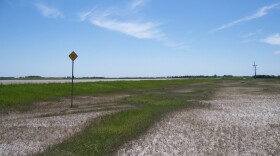When traveling across North Dakota and looking out at the rangeland, some people see just a bunch of grass. However, it is much more than that! An important step in understanding the ecology of our rangelands is to have a working knowledge of what range ecologists call ecological sites and their associated ecological site descriptions.
As defined by the U.S. Department of Agriculture Natural Resource Conservation Service or NRCS, an ecological site is “a distinctive kind of land with specific characteristics that differs from other kinds of land in its ability to produce a distinctive kind and amount of vegetation.”
Even if the casual observer cannot identify the plants, with a little closer look at the landscape, they will notice areas of distinct colors, tones and textures. Those differences reflect a variety of plant communities and their productivity due to differences in soils, landscape position, and other factors. Those differences are indications of different ecological sites.
North Dakota has many ecological sites. Their names are often indicative of the soils of the site, such as sandy, claypan, or loamy. The name may also indicate the topography, such as choppy sands, saline lowland, or steep sided wooded draw.
Because different ecological sites support different plant communities, and production differs, they are a major factor in determining grazing capacity and wildlife habitat suitability. For example, a pasture dominated by shallow-gravel ecological sites has a very different grazing capacity than one dominated by wet meadow. And wildlife species often prefer the habitat provided by certain ecological sites.
Each ecological site has a described historic climax community. But other communities may occupy the site. For example, a long history of overgrazing, or long-term no-use can result in big changes to plant community composition, diversity, and production. Knowing the ecological sites and the plant communities present can help ranchers and natural resource managers select management techniques to maintain a particular community or perhaps change it to a more desirable community.
So, as you travel about, take a closer look at the rangeland landscape. Knowledge of ecological sites is helping ranchers and natural resource managers better manage the rangeland.




